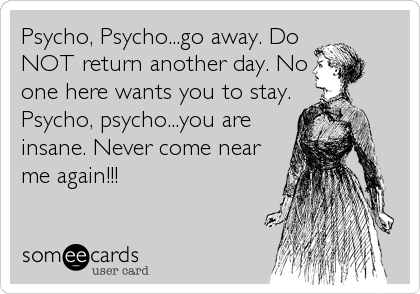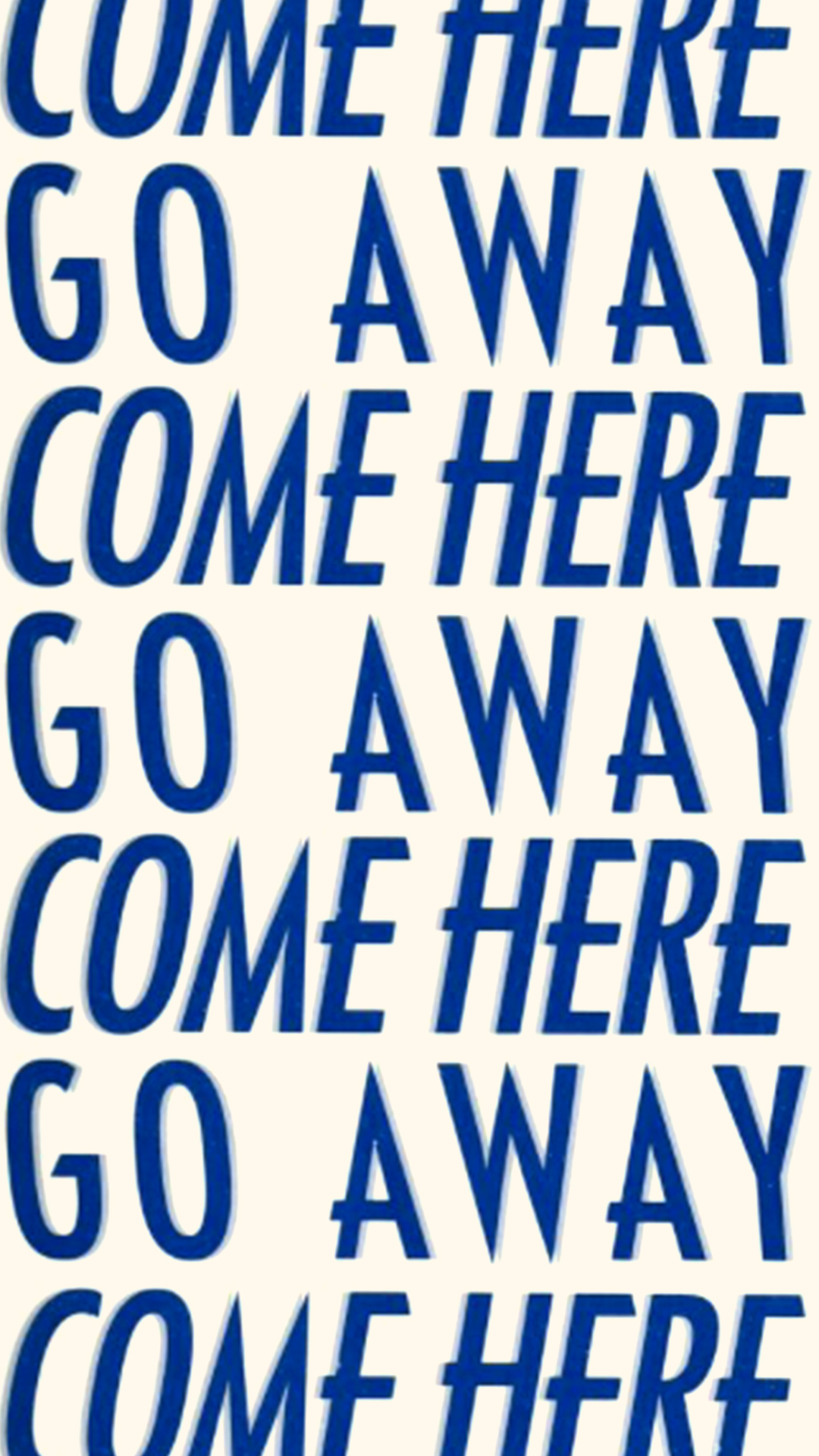come here go away
 Come Here/go Away: Earle: 9780671684358: Amazon.com: Books
Come Here/go Away: Earle: 9780671684358: Amazon.com: BooksFearful Understanding Avoid the Learning Style Individuals with a mysterious style of avoiding attachment want close relationships, but feel uncomfortable trusting others and the fear of being disappointed. Avoidant fear is one of the four key styles of attachment proposed by psychologist John Bowlby, who developed the theory of attachment. Key Takeaways: Theory of Miedo Avoidance When studying interactions between babies and their caregivers, he realized that babies had the need to be close to their caregivers and that they were often very distressed when they were separated. Bowlby suggested that this response was part of an evolved behavior: because young babies depend on parents to care, forming an attachment close to parents is evolutionaryly adaptable. According to, individuals develop expectations about how other people will behave on the basis of those early attachments. For example, if a child's parents are generally sensitive and supportive when he or she is distressed, the attachment theory will predict that the child would become a trusted adult. On the other hand, a child whose parents responded incoherently or negatively might have difficulties in trusting others when reaching adulthood. The 4 Coupling Styles Generally speaking, there are four different styles of prototypical attachment that can explain our attitudes and beliefs about relationships: Most people don't do it perfectly; instead, researchers measure the style of attachment as a spectrum. In , researchers give participants questions that measure their anxiety and avoidance in relationships. Anxiety includes statements such as, "I'm afraid I'll lose my partner's love," while the avoidance survey articles include statements like, "I'm not comfortable opening up romantic partners." In these attachment measures, the fearsome avoidant individuals highly mark both anxiety and avoidance. The roots of the style of coupling of terrible avoidant If parents do not respond to the needs of a child, the child may develop a fearful avoidant attachment style. The psychologist writes that people with fearful avoidance styles may have had parents who responded to their needs in threatening ways or could not care for and comfort the child. Similarly, the researcher found that preventative distress is linked to child abuse and neglect. However, some research suggests that the dreadful style of avoiding attachment can also have other origins. In fact, performed by Katherine Carnelley and his colleagues, the researchers found that the style of attachment was related to the relationships of the participants with their mothers when they looked at the participating university students. However, among a group of senior participants, researchers did not find the expected link between early experiences and attachment. In other words, while early life experiences affect the style of attachment, other factors can also play a role. Key studies Some research suggests that the dreadful style of avoiding attachment is connected to a higher risk of anxiety and depression. In a course conducted by Barbara Murphy and Glen Bates at the Swinburne Technology University in Australia, researchers compared the attachment style and depression symptoms between 305 research participants. Researchers found that less than 20% of the participants had a frightening avoidance style, but, among the participants to whom the researchers classified as depressed, the prevalence of fearsome avoidant attachment was much greater. In fact, almost half of the participants categorized as depressed showed a dreadful style of avoiding attachment. Others have these findings. Psychologists have found that individuals with safe attachment styles tend to self-report that individuals unsafely united. In a course conducted by leading assistant researchers Cindy Hazan and Phillip Shaver, researchers asked participants questions about their most important romantic relationships. The researchers found that the participants in safety reported having relationships that lasted longer than the relationships of the participants avoidant and anxious. Because the fearful avoidant attachment style encompasses elements of anxiety and avoidance, this particular attachment style can lead to interpersonal difficulties. For example, he writes that people with a fearful avoidant attachment want close relationships, but they can get away from their anxieties and concerns about relationships. Changing style of coupling According to recent research, the negative results of the dreadful style of avoiding attachment are not inevitable. Individuals can use therapy to change relationship behavior patterns and cultivate a safer attachment style. According to the , therapy provides a way out to understand the style of attachment and practice new ways of thinking about relationships. Additional research has found that being in a relationship with someone who is securely united can be those with less secure access styles. In other words, people with less secure clamping styles can be gradually more comfortable if they are in a relationship with someone who has a safe access style. If two individuals who are not sure are in a relationship together, it has been that they can benefit from couple therapy. The healthiest relationship dynamics are possible when you come to understand your own style of attachment, as well as your partner's style of attachment. Sources and subsequent reading There was a mistake. Please try again. Thanks for signing up.

Come Here Go Away (2010) - IMDb

Come Here Go Away: Stop Running from the Love You Want: Earle, Ralph: 9780965287906: Amazon.com: Books

come here-go away | HEAL & GROW for ACoAs

Come Here, Go Away: The Dynamics of Fearful Attachment | Psychology Today

Come Here/go Away: Earle: 9780671684358: Amazon.com: Books

Come Here Go Away: Stop Running from the Love You Want by Ralph H. Earle

Come Here-Go Away; the Dynamics of Fearful Attachment | Psychology Today | Attachment theory, Psychology today, Attachment quotes
Come Here, Go Away — Relationship Control Through Varying Intimacy Levels — The Breakup Project
Come Here!" "Go Away!" - Where Grace Abounds

I'M FINE I HATE YOU LOVE YOU I WANTICECREAM COME HERE GO AWAY ORANGES? | Meme on ME.ME

Come Here Go Away (2010) - IMDb

Bad dreams bad dreams Go away. Good dreams Good dreams come here to stay. - Post by waba on Boldomatic
Explaining the "Come Here, Go Away" Dynamic in Adult Children of Addicts

The International Symbol for Come Here Go Away Conchbeard | Lost Meme on ME.ME

COME HERE GO AWAY: Earle: 9780671759681: Amazon.com: Books

Let's face it songs are about love, which is, I love you, I don't love you, come here, go away, I miss you, I don't miss you. I'm lonely. I'm not lonely.
Come Here, Go Away: Stop Running from the Love You Want - Ralph Earle, Ralph H. Earle - Google Books

Come Here, Go Away: The Dynamics of Fearful Attachment | Psychology Today

You. Are. Mine. | Shades of grey movie, Fifty shades movie, Fifty shades trilogy
Tracing "Go Away" and "Come Here." Worksheet for Pre-K - Kindergarten | Lesson Planet
I hate when guys play the come here go away come here go away game, it kind of hurts being treated like that
Emotional Unavailability | Your Vibrant Life
Go A Way Go A Way - Shakal Blog

COME HERE GO AWAY: Earle: 9780671759681: Amazon.com: Books
FREE FOR PROFIT] SAD JUICE WRLD TYPE BEAT – "LEAN" | FAST RAP INSTRUMENTAL – XO SUEY

Come Here Go Away Sticker for iOS & Android | GIPHY

Come here go there Life ... | Quotes & Writings by Pal Sahab | YourQuote

Amazon.com: Enneagram Type 4 - Coffee and Tea Mug: Come here. Go away. Don't leave. (11oz): Kitchen & Dining

10 Tips for Supporting Someone Through Menopause | Gennev

no you listen here go away and never come back! - penguin fight | Meme Generator

Mint Condition – Queen of Come Here Go Away Lyrics | Genius Lyrics

Come Here Go Away by Matt North on Amazon Music - Amazon.com

Psycho, Psycho...go away. Do NOT return another day. No one here wants you to stay. Psycho, psycho...you are insane. Never come near me again!!! | News Ecard
Go Away! Leave me alone"... | Quotes & Writings by Writings of Soul | YourQuote

Please go away - Imgflip

archives — Haley Lauw

Queen of Come Here Go Away Paroles – MINT CONDITION – GreatSong

Why are you even here Go away - YouTube Banner Art | Meme Generator

You're Not Welcome Here, Go Away! | Memes | BMI Calculator
Posting Komentar untuk "come here go away"